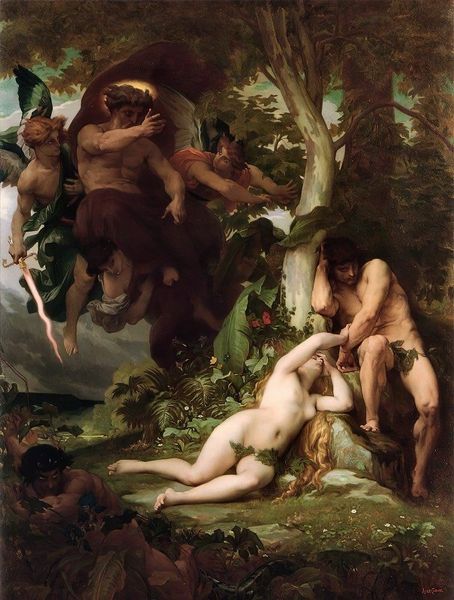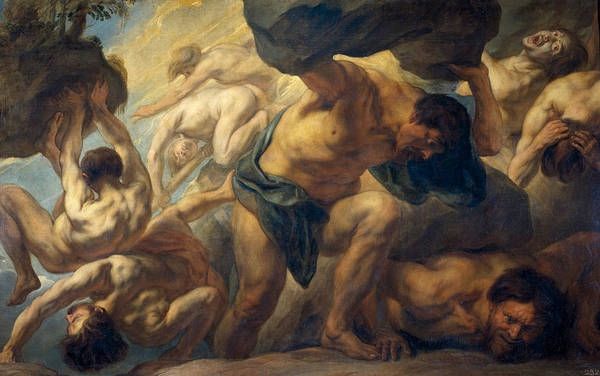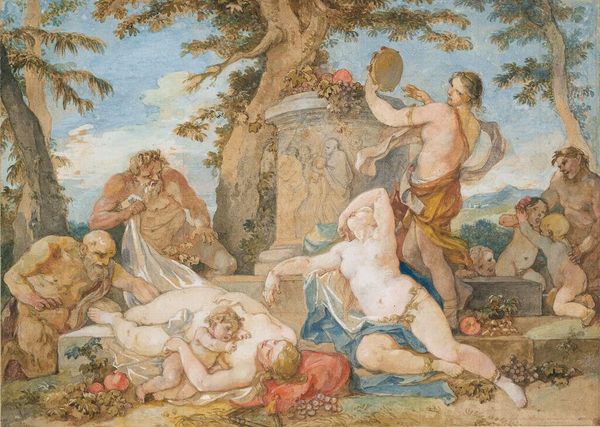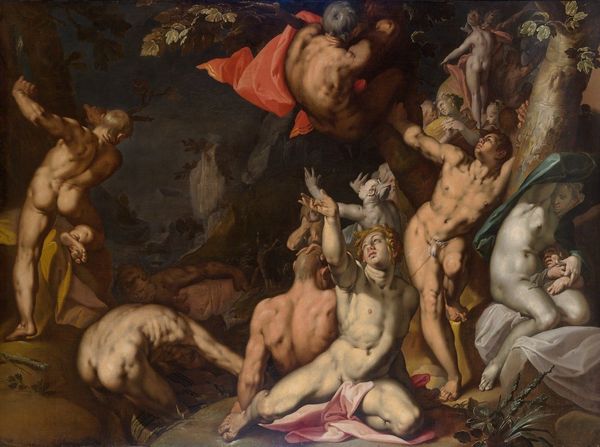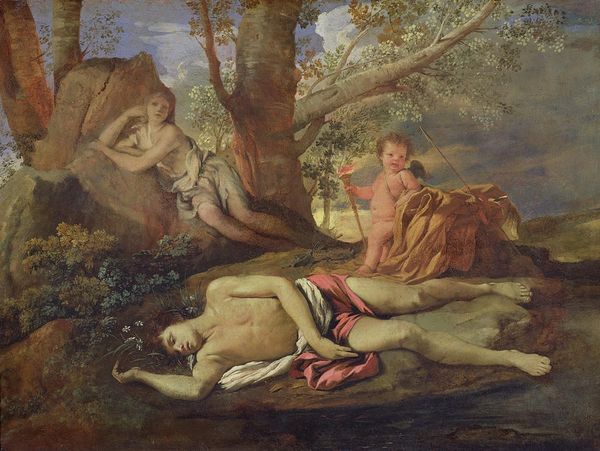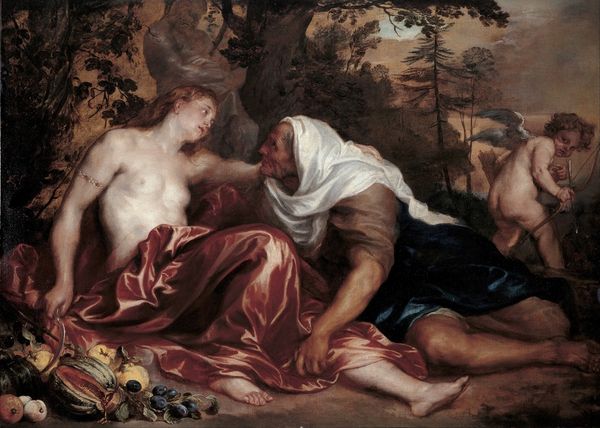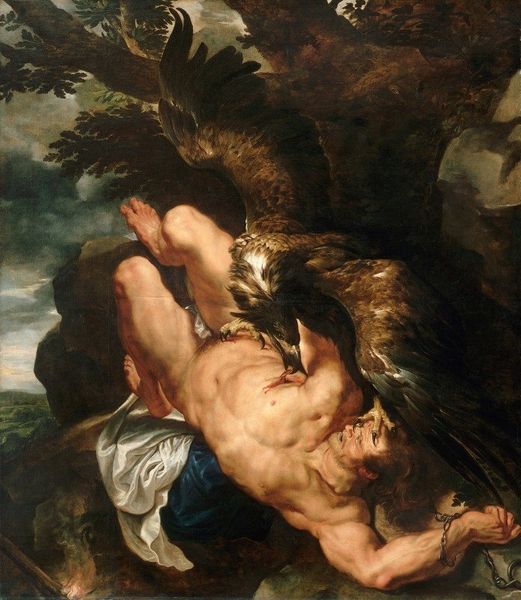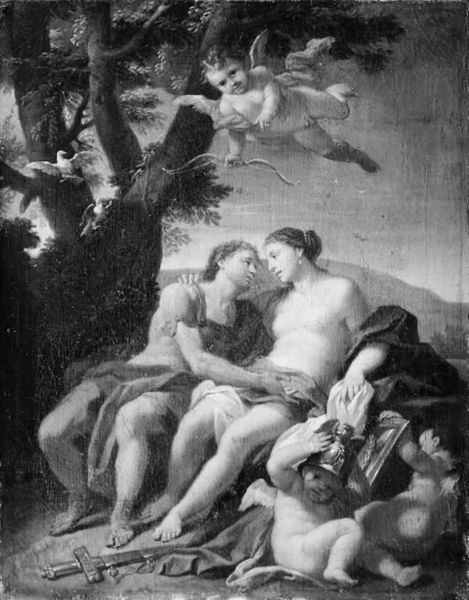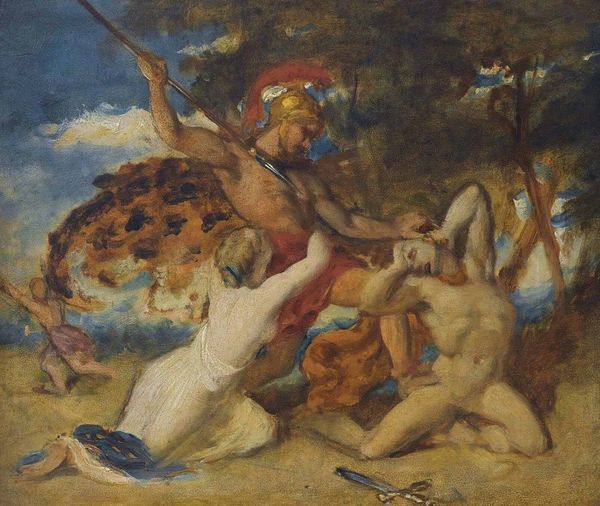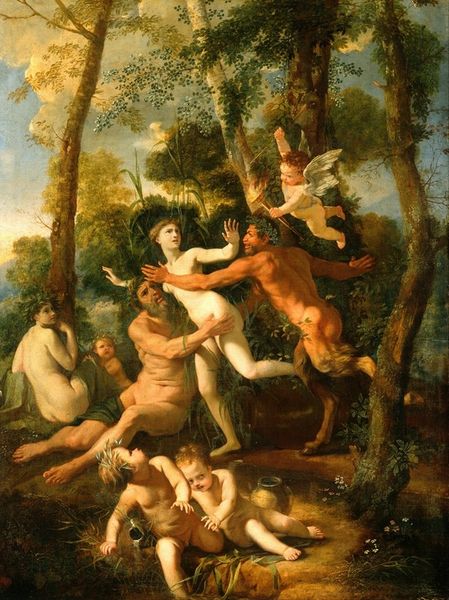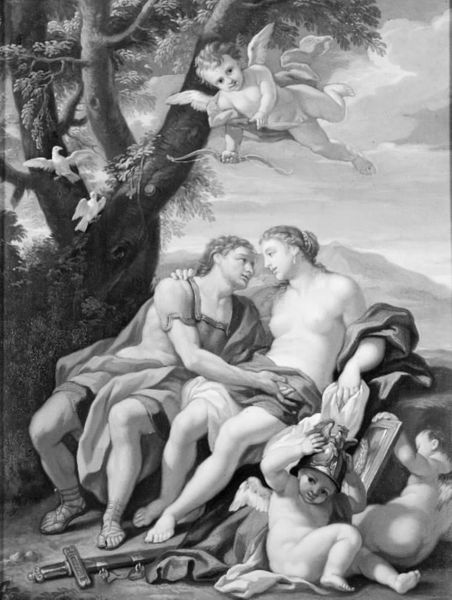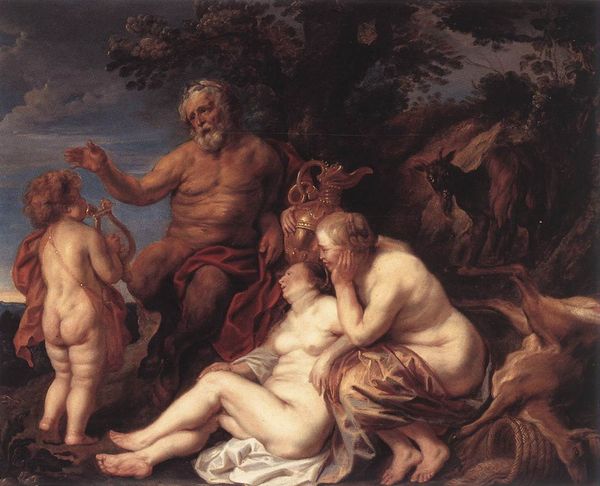
painting, oil-paint
#
allegory
#
baroque
#
painting
#
oil-paint
#
landscape
#
classical-realism
#
figuration
#
oil painting
#
mythology
#
history-painting
#
nude
Copyright: Public Domain: Artvee
Curator: Nicolas Poussin painted this mythological scene, *Midas Washing at the Source of the Pactolus*, around 1627, rendering a key moment from Ovid's *Metamorphoses* with figures emerging out of the landscape. Editor: The surface is surprisingly tactile. You can really feel the layered applications of paint. It gives a sensuous quality to the figures. Curator: Poussin's choice to depict the moment of purification, Midas cleansing himself of his golden touch in the river Pactolus, speaks volumes. It's not just about absolution; it's about transformation through ritual. The gold transferring to the river explains, mythologically, its famed golden sands. Editor: It’s interesting how the golden touch transforms from divine gift to unbearable burden—but in terms of its production, how Poussin’s material application brings forth figures whose forms begin and end with nature; in fact they resemble their earthy surroundings more than any conventional idea of perfection. Curator: And note the symbolism inherent in the landscape itself—the grotto as a place of hidden knowledge, the river as a symbol of life, and the exposed flesh, almost monumental, reminding us of our vulnerabilities, all tied together with his Baroque, classical realism style, so indicative of the values circulating around 17th century Italy. Editor: Sure, but the landscape also does real work. It offers Midas’ exposed body temperature regulation, water for hygienic improvement, the potential for raw material and sustenance. We’re witnessing social and natural dynamics, not simply observing symbolic weight. What pigments would have given him that rich skin tone for instance? And were they locally sourced or traded for? Curator: I see the broader theme as humanity’s relationship with power and consequence. We crave control, symbolized by Midas’s wish, yet we often fail to consider the implications. Even more telling is the shift, from God Dionysus offering him power, to finding redemption with a nature spirit in the river, a natural system cleansing Midas. Editor: It highlights the labor required, both to accumulate the gold that cursed Midas and Poussin's studio assistants required to render this vision. Gold is never just gold; it’s human labor. The same is true for every inch of pigment on this canvas. Curator: Well, looking closer has deepened my appreciation for how Poussin weaves classical mythology with human fallibility through his dynamic and deeply humanistic interpretation. Editor: I agree! Focusing on materiality gives you not only another lens, but new, and perhaps challenging insight to canonical interpretations.
Comments
No comments
Be the first to comment and join the conversation on the ultimate creative platform.

